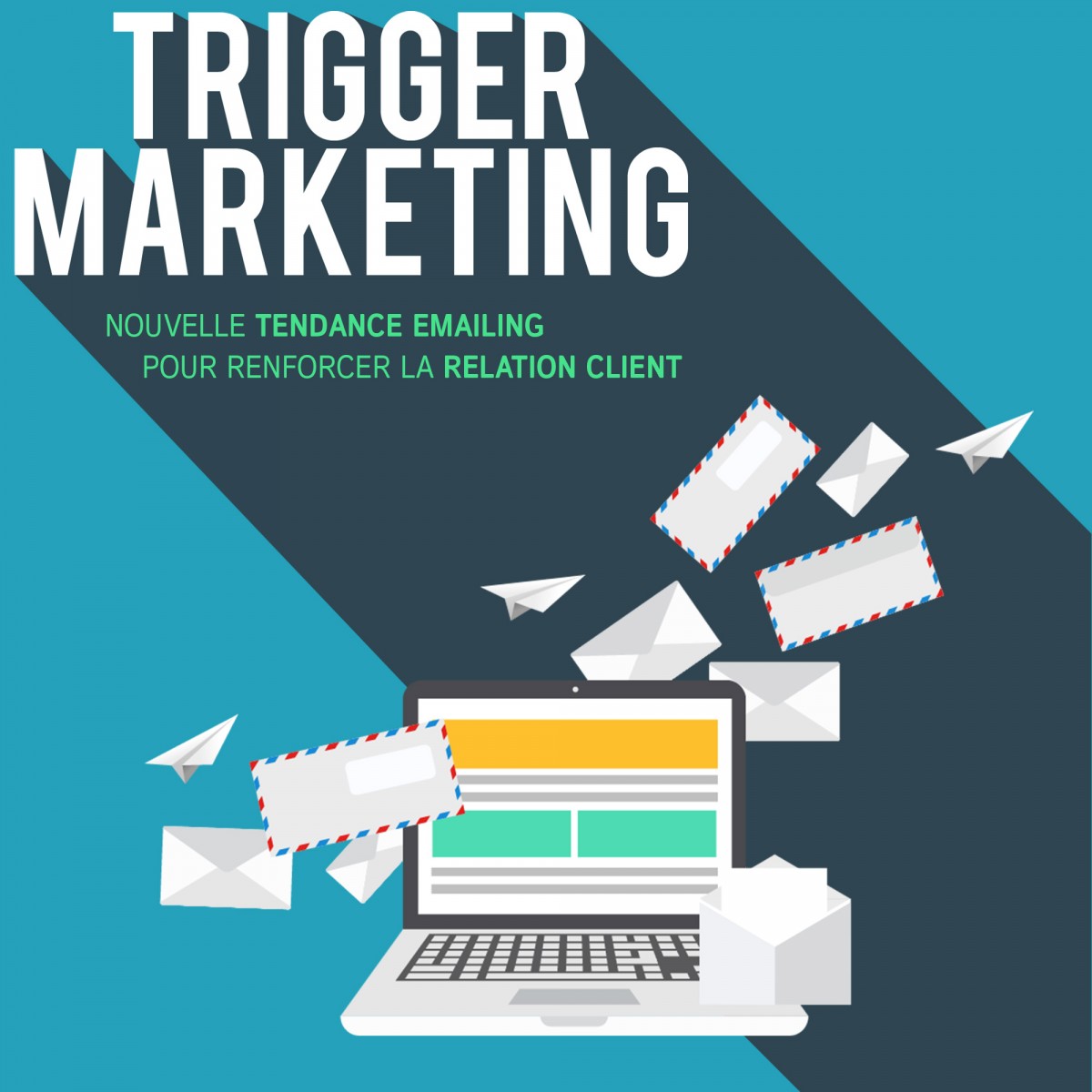Dico du web : le jargon de la publicité en ligne

ADWORDS
Encore l’une des innombrables inventions de Google, Adwords est l’outil qui permet de créer des annonces payantes sur les pages de résultats du leader des moteurs de recherches .
Avec cette plateforme, on peut mettre le lien de son site web en première position sur une recherche de mots clés définie à l’avance. On parle alors de référencement payant : on paie quand un internaute clique sur l’annonce. Le montant par clic dépend bien entendu du succès du mot clé choisi : un mot très populaire = un mot très cher.
AFFILIATION
L’affiliation est une pratique marketing par laquelle un site lambda se fait rémunérer pour placer un lien sur une page qui redirige vers la page d’un produit sur un site d’e-commerce. Il est devenu aussi facile de faire de l’affiliation que de faire un tweet grâce à des plateformes conçues pour mettre en relation des vendeurs avec des créateurs de sites internet. Les plus gros sites d’e-commerce ont même créé un espace sur lequel on peut s’inscrire pour récupérer des liens d’affiliation.
Facile, me direz-vous alors, de se faire de l’argent ! Le rêve américain est à portée de main. Mais les vendeurs ont pensé à tout. Comme tout le monde peut le faire, c’est forcément limité au nombre de clics ou au nombre d’achats. Et en prime, la rémunération n’est bien souvent qu’un tout petit pourcentage. Il faudra donc être patient pour gagner le million.
ADSENSE
Dans le monde de la publicité sur le net, il y a Google, Facebook, et les autres. Adsense n’est autre que l’une si ce n’est pas LA plus grosse régie publicitaire sur internet, au monde. Elle est évidemment le produit du célèbre moteur de recherche.
CALL-TO-ACTION
Dans les techniques d’écriture d’une annonce sur le web il y a deux points clés : éviter à tout prix les fautes et faire un call-to-action. Cet anglicisme se traduit par une formule, un “appel à l’action” souvent utilisé en fin de mail ou de publicité dans le but d’améliorer le taux de conversion, le nombre d’achats, d’inscriptions, ou encore d’augmenter les demandes de devis.
On retrouve par exemple “Pour en savoir plus, contactez-nous” en fin d’annonce ou “Cliquez ici pour profiter de cette offre” en fin de mail. On préfèrera les verbes d’action car le but est bien d’inciter le lecteur à agir, à cliquer.
COOKIES
Quand on vous dit que les informaticiens ont un humour très… singulier. Ces adeptes de calembours et autres contrepèteries de la sorte ont baptisé cookies les fichiers contenant une information que les sites web enregistrent sur votre ordinateur lors d’une visite.
Pour quoi faire ? Initialement, ils permettent de personnaliser la navigation et d’enregistrer les préférences des internautes. Les informations conservées concernent essentiellement le nombre de visites que vous avez effectué sur une page, le temps de votre cession… et la machine utilisée. Ce dernier paramètre est important car il permet d’identifier un visiteur et ainsi mieux cibler une publicité.
DISPLAY
En matière de publicité en ligne, il faut savoir qu’il y a deux camps historiques : le search (les liens commerciaux que l’on retrouve après une recherche) et le display (les publicités visuelles qui apparaissent bien souvent quand on le désire le moins). Certaines études prouvent leur efficacité, d’autres démontrent qu’elles provoquent une lassitude de la part des internautes. Quoi qu’il en soit, ces publicités représentent encore un des moyens les plus utilisés de la publicité en ligne.
Le display peut se décliner en plusieures dimensions : de la simple bannière rectangle au Rich Media (habillage entier du fond d’une page web), en passant par le format vidéo pre-roll (avant la vidéo, classique chez Youtube).
NATIVE ADVERTISING
A l’heure où les publicités display sont menacées par le dégoût des internautes et les bloqueurs de publicité, une solution voit le jour. Cette solution s’appelle le native advertising. Ce nouveau format datant d’à peine quelques années consiste en l’intégration d’une publicité dans un contenu.
On retrouve ce genre de publicité dans les articles de blog sponsorisés, les publications sur les réseaux sociaux en partenariat avec une marque ou encore les reportages de presse financés par une marque. L'intérêt pour l’annonceur est de s’associer à du contenu de qualité et surtout de montrer son engagement envers la communauté.
RETARGETING
Quand vous passez en revue des produits sur un site e-commerce vous avez l’impression de les revoir sur tout le web ? Cette impression s’appelle le retargeting, ou remarketing, et ce pas qu’une impression.
Cette pratique de marketing consiste à enregistrer les produits qu’un internaute regarde grâce aux fameux cookies - on considère alors que cet internaute est potentiellement intéressé mais qu’il est parti avant d’acheter - puis de réafficher les produits sous forme de publicité sur d’autres sites internet. Vous en trouverez par exemple sur Facebook et sur les résultats de recherche Google.
Le tout, pour être sûr que vous n’allez pas regretter votre non-achat. Malin.
Le retargeting ne se contente pas seulement de vous montrer des produits que vous avez vus, mais des produits susceptibles de vous plaire, par rapport aux sites que vous avez visités et votre profil (âge, genre, géolocalisation…).
TAUX DE CONVERSION
A chaque lexique son calcul ! En publicité, le calcul tendance à utiliser à tort et à travers, c’est le taux de conversion. Appelé également taux de transformation, il permet de connaître le pourcentage d’individus exposés à une publicité qui ont réalisé l’action voulue (achat, inscription..). Ce calcul sert à démontrer l’efficacité, ou non, d’une publicité.
Calcul : Nombre d’actions / Nombre d’impression (ou de clics sur une publicité) x100
Vous possédez maintenant, assez de vocabulaire pour devenir la nouvelle génération de Don Draper, le célèbre publicitaire de la série Mad Men. Ou tout simplement comprendre le jargon employé par votre agence web.
Retrouvez prochainement le Dico du Web pour devenir incollable sur le Web Design !
Article rédigé par Marion Vannelli
ADWORDS
As one of the uncountable inventions of Google, Adwords is the tool which allows to create paying announcements on the result pages of the search engines’ leader.
With this platform, we can put the link of the Web site in first position on a search for keywords defined in advance. Then we tell about paying referencing: we pay when an Internet user clicks the announcement. The amount by click depends naturally on the success of the chosen keyword: a very popular word = a very expensive word.
MEMBERSHIP
The membership is a marketing practice by which a common site is paid to put a link on a page which redirects the product page on an e-commerce site. It became so easy to create the membership that makes a tweet thanks to platforms designed to set up the relation of the sellers and creators of web sites. The biggest e-commerce sites even created a space in which we can subscribe to retrieve the membership links.
Simply, then you might tell me to make money! The American dream is within reach. But the sellers thought of everything. As everybody can make it, it has to be limited to the number of clicks or purchases. In addition, the remuneration is often only a quite small percentage. Thus it will be necessary to be patient to win the million.
ADSENSE
In the world of the advertising on the Net, there is Google, Facebook, and the others. Adsense is none other than the one if it is not the biggest advertising company on the Internet, in the world. It is obviously the product of the famous search engine.
CALL-TO-ACTION
In the techniques of writing of an announcement on Web, there are two key points: avoid at any costs the faults and make a call-to-action. This Anglicism is translated by a formula, a "call to the action" often used at the end of an e-mail or an advertising with the aim of improving the rate of conversion, the number of purchases, registrations, or even increasing quotation requests.
We find out, for example, " How to know more about it, contact us "at the end of announcement or "Click here to take advantage of this offer" at the end of an e-mail. We prefer the verbs of action because the purpose is good to incite the reader to act, and click.
COOKIES
When you are told that the IT specialists have a very peculiar sense of humor. These followers of puns and other spoonerism have baptized cookies files containing the information which Web sites record on your computer during a visit.
What’s for? Initially, they allow to personalize the browsing and to record the preferences of the Internet users. The preserved information concerns essentially the number of visits which you made on a page, the time of your transfer and the used machine. This parameter is important because it allows to identify a visitor and so it’s better to target an advertising.
DISPLAY
Concerning on-line advertising, it is necessary to know that there are two historic camps: the search (the commercial links which we find after a search) and the display (the visual advertisements which appear very often when we have the least desire). Some studies prove their efficiency, others demonstrate that they cause a tiredness for a part of the Internet users. Anyway, these advertisements still represent one of the most way used by the on-line advertising.
The display may include various sizes: from the simple rectangle banner to the Rich Media (the whole trim of the bottom of a web page), via the video pre--roll format (before the video, classic in YouTube).
NATIVE ADVERTISING
When display advertisements are threatened by the disgust of the Internet users and the advertising blockers, a solution has been created. This solution is called a native advertising. This new format dating hardly a few years consists of the integration of an advertising in contents.
We find this kind of advertising in the sponsored blog postings, the publications in the social networks in the partnership with a mark or even the press reports were financed by a mark. The advertisers are interested in joining the quality contents and especially showing its commitment to the community.
RETARGETING
When you reviewed products on an e-commerce site, have you had the impression to see them again on all Web? This impression is called the retargeting, or remarketing, and this step of an impression.
This marketing practice consists of recording the products at which an Internet user looks thanks to the famous cookies - we consider whether this Internet user is potentially interested or he left before buying - then to reshow products in the advertising form on other web sites. You will find them for example on Facebook and in Google search results.
All, to be sure that you won’t regret your non-purchase. Cunning.
The retargeting shows you not only products which you saw, but also products susceptible to please you, with regard to the sites you visited and your profile (age, kind, geo-location …).
RATE OF CONVERSION
Each lexicon has its calculation! In advertising, the trendy calculation to be wildly used, is the rate of conversion. Called rate of transformation allows to know individuals' percentage exposed to an advertising which realized the deliberate action (purchase, registration ..). This calculation serves to demonstrate the efficiency, or not, an advertising.
Calculation: number of actions/Number of impression (or clicks on an advertising) x100
You possess now, enough vocabulary to become Don Draper's new generation, the famous advertising executive of the series Mad Men. Or simply include the jargon used by your Web company.
You will soon find the Dictionary of Web to become unbeatable on Design Web!
Article written by Marion Vannelli





